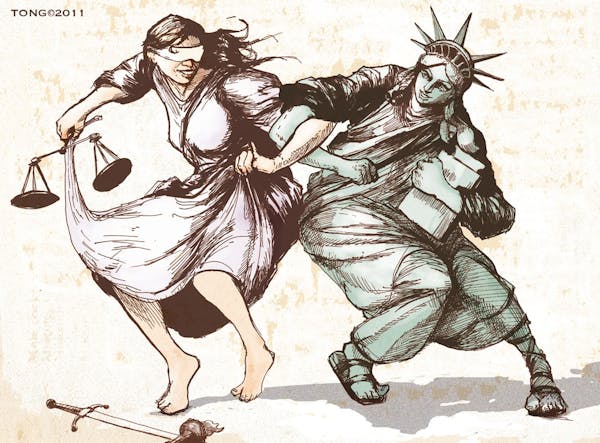Minnesotans want honest, efficient elections in which every vote counts. However, requiring photo IDs is not the right way to make Minnesota's good election process even better. There are less expensive, more inclusive methods to ensure that voting is free and fair. That's among the reasons why Minnesotans should vote no on the photo voter ID ballot question.
The proposed state constitutional amendment would require voters to present a government-issued photo ID card to vote. That requirement might seem reasonable -- after all, many of us need IDs for cashing checks, using credit cards or boarding a plane. So why not include voting on that list?
Answer: Because voting is a precious, hard-won right that should be accessible to all. According to state records, about 215,000 registered Minnesota voters lack a driver's license or other ID, or have addresses different from that on voter registration lists.
Restricting voting in this country can be an emotional issue. Many older Americans remember times in Southern states when blacks and others were prevented from voting through poll taxes and other trumped-up tests. And several court cases in other states have found that photo ID requirements can indeed disenfranchise voters. Given that history, government should strive to increase voter ranks, not limit them.
Amendment proponents say the state would provide IDs for free. Yet the mandate would not be simple or free. Local and state elections officials estimate a price tag from $30 million to more than $50 million, including costs for new equipment, additional election judges, training and infrastructure. That bill would likely be covered by local property tax increases or other service cuts.
In addition, it could be burdensome for many elderly voters to track down birth certificates -- or for students to demonstrate residency and eligibility.
Requiring picture ID cards also introduces provisional voting, yet another unnecessary complication. If a voter could not produce an ID, he or she could vote "provisionally" and come back later to provide documentation. But why put citizens through that additional step and run the risk that they won't return?
More than 540,000 Minnesota voters used election-day registration in 2008 -- about 18 percent of all voters. Some had neighbors vouch for them. But this amendment would eliminate vouching, which could reduce same-day voting -- a practice that contributes to Minnesota's high voter turnout.
As previous governors of both parties agree, major election changes affect all voters and should be made only with agreement of the governor and both parties. This amendment is on the ballot because DFL Gov. Mark Dayton vetoed the GOP Legislature's party-line proposal. Legislating-by-constitution is no way to handle voting rules.
Voter ID proponents say our state has a problem with voter fraud. Yet their own numbers show that only about 200 or so problems occurred -- largely because of felons on probation. Photo ID wouldn't solve that problem because IDs wouldn't indicate felons' status. A more sensible approach would be to provide polling places with electronic lists and photos of those on probation.
Finally, available technologies will soon make physical ID cards unnecessary. Some DFLers recommend that Minnesota use electronic poll books, giving election judges access to drivers' licenses and ID photos already on file with the state. Such a system would make most voters easy to identify and could be modified to accept college IDs and take on-the-spot photos when needed. Why place a photo ID requirement in the Constitution that could be obsolete in the near future?
Earlier this year, when the Legislature approved putting photo ID on the ballot, a majority of Minnesotans approved. But more recent polls show the measure has lost support; it seems that the more people learn about it, the less they believe in it. That's the right way to go on a proposal that could do more harm than good.
---------------------------------
To read more commentaries about the photo ID amendment, go here.
Ukraine aid vote is a domestic and geopolitical inflection point



